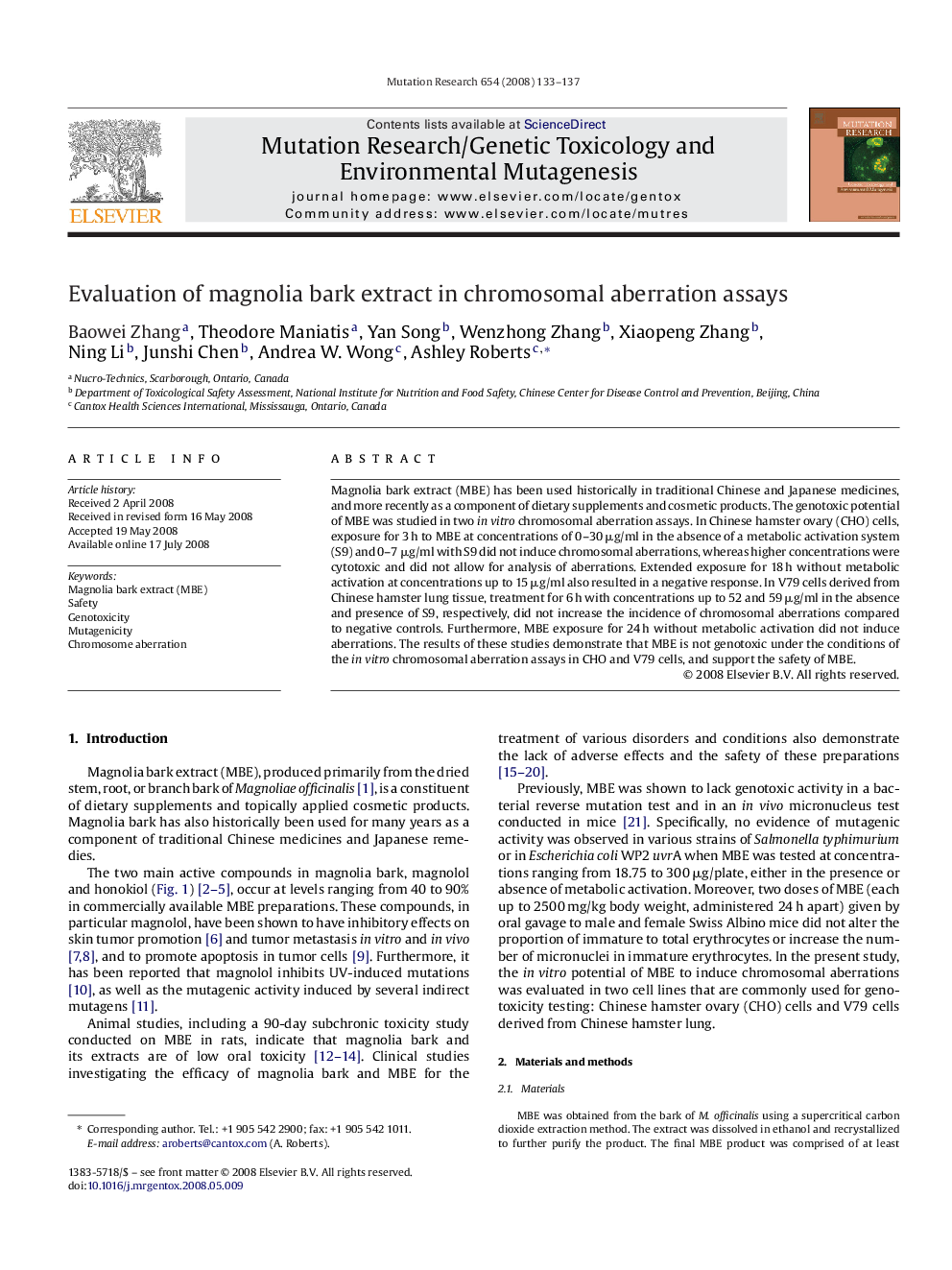| Article ID | Journal | Published Year | Pages | File Type |
|---|---|---|---|---|
| 2148919 | Mutation Research/Genetic Toxicology and Environmental Mutagenesis | 2008 | 5 Pages |
Magnolia bark extract (MBE) has been used historically in traditional Chinese and Japanese medicines, and more recently as a component of dietary supplements and cosmetic products. The genotoxic potential of MBE was studied in two in vitro chromosomal aberration assays. In Chinese hamster ovary (CHO) cells, exposure for 3 h to MBE at concentrations of 0–30 μg/ml in the absence of a metabolic activation system (S9) and 0–7 μg/ml with S9 did not induce chromosomal aberrations, whereas higher concentrations were cytotoxic and did not allow for analysis of aberrations. Extended exposure for 18 h without metabolic activation at concentrations up to 15 μg/ml also resulted in a negative response. In V79 cells derived from Chinese hamster lung tissue, treatment for 6 h with concentrations up to 52 and 59 μg/ml in the absence and presence of S9, respectively, did not increase the incidence of chromosomal aberrations compared to negative controls. Furthermore, MBE exposure for 24 h without metabolic activation did not induce aberrations. The results of these studies demonstrate that MBE is not genotoxic under the conditions of the in vitro chromosomal aberration assays in CHO and V79 cells, and support the safety of MBE.
